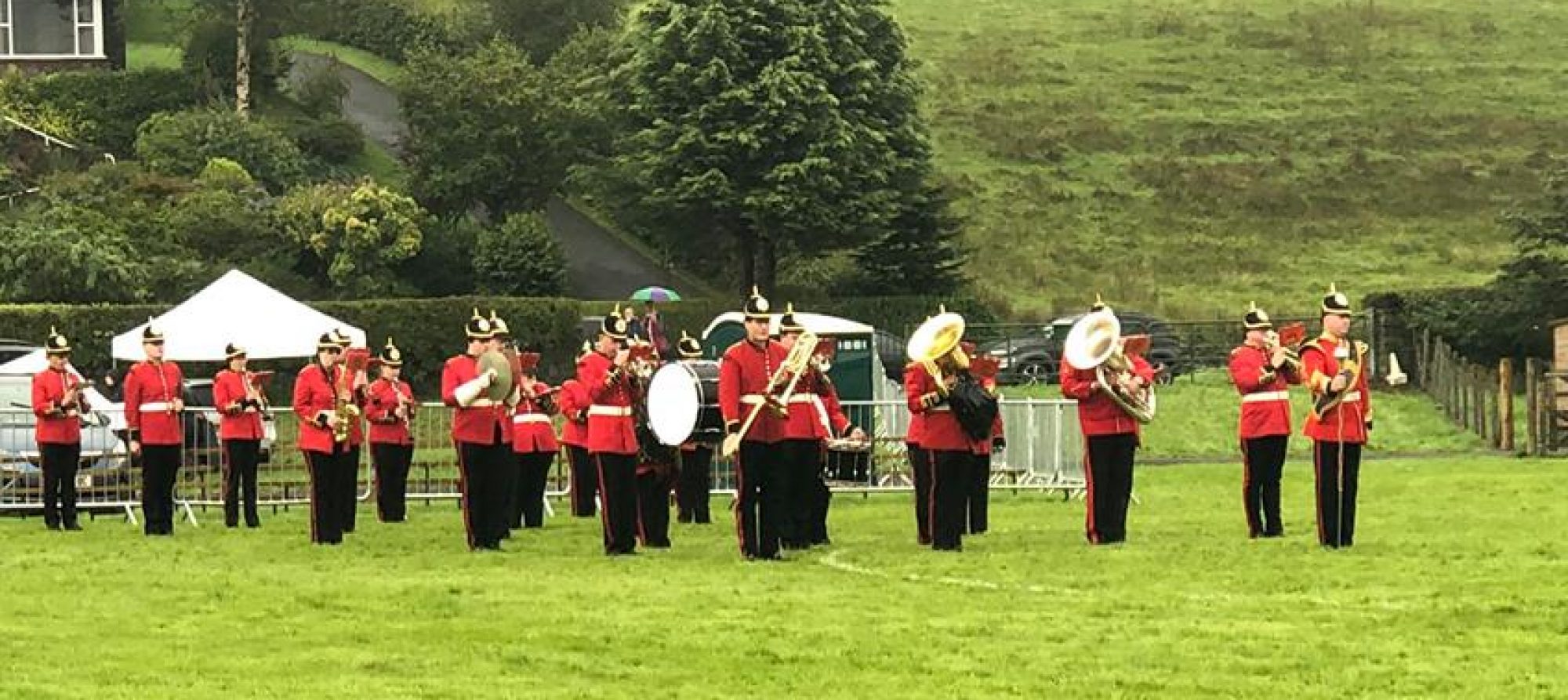The Adamson Military Band – a brief history
1888 – the present day
At a Public meeting held in the Victoria Hotel,Dukinfield in the Autumn of 1888, Messrs. S. Knott, W. Haigh, T. Bradburn, W. Lindley, James Hartley, S. Cock Sr., J. Fletcher, J. A. Fletcher and John Hartley were elected to form a committee to organize a band.
Mr. Knott was elected Chairman, Mr. J. Fletcher Treasurer, and Mr. John Hartley Secretary, and the Astley Victoria Reed Band was created.
Over the next few years, the Band rehearsed in various venues and early in the year 1889 made its headquarters in Johnson’s Signal Works, which at that time stood near Messrs Adamson’s Engineering Works, called the Newton Moor Iron Works on Muslin Street (now Talbot Road), between Hyde and Dukinfield, Cheshire. In February of this year, it was suggested changing the name of the band to Adamson Reed Band, a more appropriate name, as Mr. Daniel Adamson had taken such a keen interest in the welfare of the band, and was practically the founder of Newton Wood, the home of the band. The suggestion was welcomed and the band has been known under the name of Adamson ever since. In 1894, the band played at the opening of the Manchester Ship Canal as a result of the connection between Daniel Adamson and the Band.
 Adamson Reed Band – 1902
Adamson Reed Band – 1902
In the early 1900s, the band began to participate in church festivals – in 1908 that the association commenced with Flowery Field Church, the band being engaged for their Whitsuntide festivities, and the Association still stands today. In 1911, the band began to compete in wind-band contests, and soon became a successful contest-winning band. During the Great War, the band’s numbers depleted from 35 to just 9, as man and boy enlisted to serve King and Country, with seven men paying the supreme sacrifice.
After the Armistice the members who had joined up returned to the band, and worked hard to regain their former standing in the community, doing concerts in town halls, contests end even played in Stamford Park on the occasion of the visit of the Prince of Wales to Ashton-under-Lyne in 1920.

In the 1920s
Throughout the 20s and 30s, the band entered and won certificates in Military band contests, and as a result of their success, and the new military style uniforms purchased in 1920 for the princely sum of £200, the band became known as The Adamson Military Band.

The Band continued in its popularity and success throughout the 30 and 40s, doing more concerts, park jobs, carnivals and parades as well as contests. Once again, war was thrust upon them, and the activities of the band were somewhat reduced, although between the years 1941-1945 they received a fair share of any engagements going more especially locally, as outside engagements were somewhat curtailed during this period. The band was called upon to assist in many Charitable events, and assisted at all the local weeks for raising money to prosecute the War such as “Wings for Victory” Week, “Salute the Soldier” etc., and gave their services in connection with local charities, concerts in the Aid to China Fund, Infirmary Fund, Welcome Home Fund and others. Although 14 members of the band joined H M Forces, serving on all fronts, in the Army and Air Force, and others were engaged in various defence forces, the remaining members by dint of hard work, and the assistance of friends from bands that had disbanded, carried on as they did in the 1914-1918 War.
Since then, the band has continued to serve the public and the local community. The Adamson Military Band currently participates in Remembrance Parades, marching displays and Christmas festivals. They can be booked for any kind of function.

You must be logged in to post a comment.